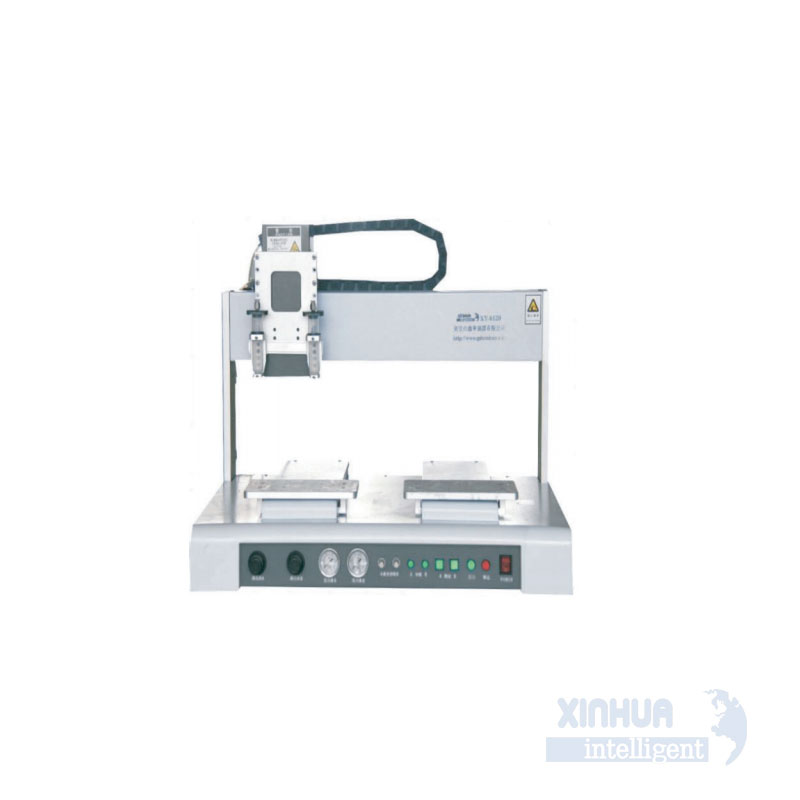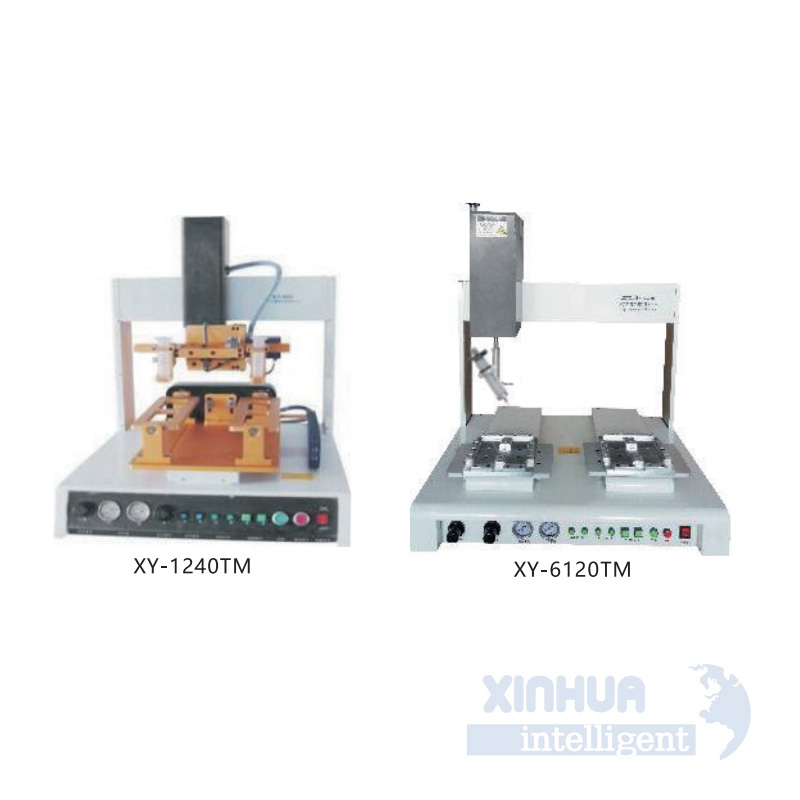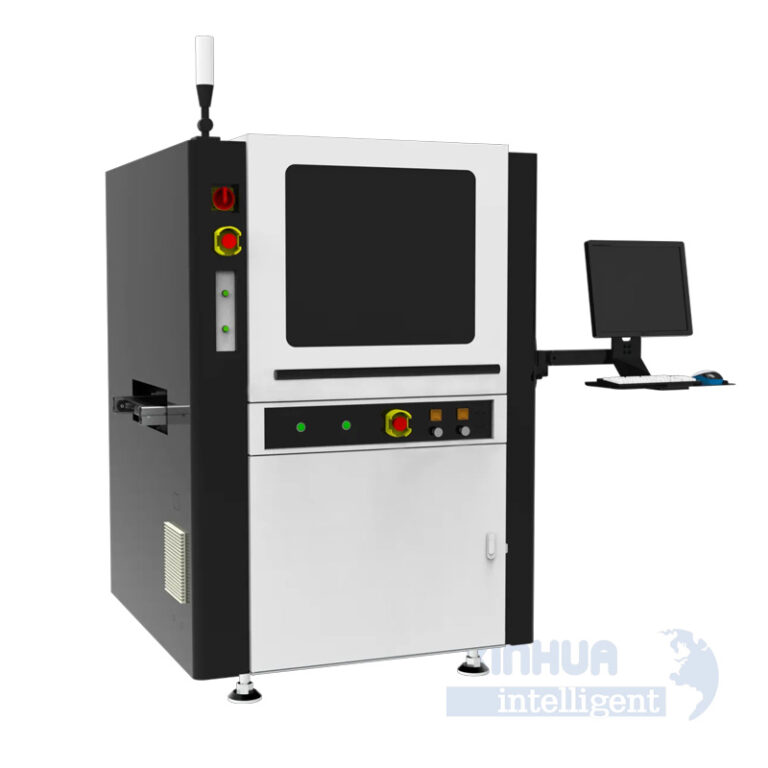
Title: Overcoming Challenges with the Automatic Glue Potting Machine: A Technical Deep Dive

In modern manufacturing, especially in electronics and industrial assembly sectors, precision, efficiency, and consistency are non-negotiable. One of the critical processes in ensuring product durability and performance is glue potting—a method used to encapsulate electronic components for protection against moisture, dust, vibration, and other environmental stressors.
The advent of the automatic glue potting machine has revolutionized this process by offering high-speed dispensing, improved accuracy, and reduced labor costs. However, like any advanced machinery, these systems come with their own set of challenges that manufacturers must address to realize optimal performance. In this article, we’ll explore the most common pain points associated with automatic glue potting machines, examine practical and technical solutions, highlight real-world applications, and conclude with actionable insights on how partnering with a reliable provider like Xinhua Intelligent can make all the difference.
—

1. Common Pain Points or Challenges
While automatic glue potting machines significantly enhance production capabilities, they also introduce several operational and technical challenges that can impact productivity and quality if not properly managed.
a) Inconsistent Mixing Ratios
One of the most critical aspects of glue potting is achieving the correct mixing ratio between resin and hardener. Even minor deviations can lead to incomplete curing, poor adhesion, or mechanical failure. This issue often arises due to pump inaccuracies, material viscosity changes, or improper calibration.
b) Air Bubbles and Void Formation
Air entrapment during dispensing can result in voids within the potted area, which compromises the structural integrity and protective qualities of the encapsulation. These bubbles may form due to improper degassing, fast dispensing speeds, or incorrect nozzle geometry.
c) Material Waste and Cost Management
Automatic dispensing systems require precise control over material usage. Excess glue application or frequent cleaning cycles can lead to significant waste, increasing operational costs and reducing profitability.
d) Equipment Downtime and Maintenance
Frequent maintenance requirements, complex cleaning procedures, and system breakdowns can cause costly production halts. Components such as mixing chambers, nozzles, and pumps are particularly prone to wear and blockages.
e) Integration with Existing Production Lines
Many manufacturers struggle to integrate automatic glue potting machines into existing automation workflows. Compatibility issues with PLC systems, MES integration, and synchronization with conveyor lines can hinder seamless operation.
—
2. Practical and Technical Solutions
Addressing the above challenges requires a combination of advanced engineering, process optimization, and intelligent system design.
a) Precision Metering and Mixing Systems
Modern automatic glue potting machines now feature high-precision metering pumps, often based on servo motor-driven piston or gear pump technologies. These systems ensure accurate volumetric ratios (often within ±1%) and can dynamically adjust for variations in material viscosity through built-in sensors and feedback loops.
Some advanced systems incorporate online viscometers and closed-loop control algorithms that continuously monitor and adjust the mix ratio in real-time. This ensures consistent output even when ambient conditions or material properties fluctuate.
b) Vacuum-Assisted Dispensing
To combat air bubbles and void formation, vacuum-assisted dispensing systems have become increasingly popular. By evacuating air from both the material supply and the dispensing chamber before application, manufacturers can significantly reduce entrapped gases.
Additionally, low-pressure dispensing techniques and multi-stage degassing protocols help maintain bubble-free output. Nozzle designs with optimized flow paths further minimize turbulence and air incorporation.
c) Smart Material Control and Waste Reduction
Smart software platforms integrated into automatic glue potting machines allow for real-time monitoring of dispense volumes, predictive maintenance alerts, and material consumption tracking. These tools enable operators to optimize glue usage, schedule timely maintenance, and avoid over-application.
Moreover, self-cleaning nozzles and quick-change disposable mixing tubes reduce downtime and material waste during changeovers. Some systems use closed-loop material recovery to recapture unused or excess adhesive, further enhancing sustainability and cost-efficiency.
d) Modular Design for Easy Maintenance
Manufacturers are increasingly adopting modular machine architectures that allow for easy replacement of critical components. Quick-disconnect fluid lines, tool-less disassembly, and corrosion-resistant materials extend equipment lifespan and simplify servicing.
Predictive maintenance features—such as vibration sensors, temperature monitoring, and pump wear analysis—help anticipate failures before they occur, minimizing unplanned downtime.
e) Seamless Integration with Industry 4.0 Technologies
Automatic glue potting machines are now being designed with Industry 4.0 compatibility in mind. Features like OPC UA communication, Ethernet/IP support, and PLC connectivity enable seamless integration into smart factory ecosystems.
These systems can be synchronized with robotic arms, conveyors, and MES platforms via centralized control interfaces. Real-time data logging and remote diagnostics also allow for proactive troubleshooting and performance optimization across distributed production sites.
—
3. Real-World Applications
The versatility and reliability of automatic glue potting machines make them indispensable across a range of industries. Here are some key applications where these systems deliver substantial value:
a) Electronics Manufacturing
In the production of PCBs, LED modules, sensors, and power supplies, automatic glue potting is used to protect sensitive components from moisture, shock, and thermal stress. High-volume consumer electronics producers rely on these machines to ensure consistent encapsulation while maintaining throughput.
For example, a leading smartphone manufacturer uses an automated potting line to apply thermally conductive epoxy around battery management units, improving device longevity and safety.
b) Automotive Industry
Automotive ECUs (Electronic Control Units), connectors, and sensor assemblies are often potted to withstand extreme temperatures, vibration, and exposure to engine fluids. The precision offered by automatic dispensing systems ensures compliance with stringent automotive standards such as ISO TS 16949.
One global automotive supplier implemented an automatic glue potting station that reduced manual intervention by 80%, while achieving a 99.7% first-pass yield rate.
c) Renewable Energy Sector
In solar inverters and wind turbine controllers, potting is essential to protect internal electronics from outdoor elements. Automatic systems ensure that each unit receives uniform coverage, meeting IP67+ protection ratings required for long-term outdoor deployment.
A European solar energy firm deployed an inline glue potting solution that integrated with their ERP system, enabling full traceability and reducing field failure rates by 65%.
d) Medical Device Assembly
Medical devices, including diagnostic equipment and implantable electronics, demand sterile and biocompatible encapsulation. Automatic glue potting machines equipped with cleanroom-rated components and validated processes are ideal for such high-stakes applications.
A medical device company successfully transitioned from manual to automatic potting for pacemaker circuitry, achieving ISO Class 7 cleanroom compliance and FDA regulatory approval.
—
4. Conclusion and Call to Action
The adoption of automatic glue potting machines is no longer a luxury but a necessity for manufacturers aiming to stay competitive in today’s high-demand, quality-driven markets. While initial implementation comes with its share of technical and operational challenges, the right combination of advanced hardware, intelligent software, and expert support can overcome these hurdles effectively.
Choosing a trusted partner with deep industry experience is crucial to unlocking the full potential of your potting operations. Xinhua Intelligent, a leader in automated dispensing and potting solutions, offers a comprehensive portfolio of high-performance automatic glue potting machines tailored to meet diverse industrial needs.
With cutting-edge technologies like real-time mixing control, vacuum-assisted dispensing, and Industry 4.0 integration, Xinhua Intelligent empowers manufacturers to achieve superior process stability, reduced costs, and enhanced product reliability.
Whether you’re looking to upgrade an existing line or build a new automated potting station from scratch, Xinhua Intelligent provides end-to-end support—from consultation and customization to installation and ongoing service.

Take the next step toward smarter manufacturing. Contact Xinhua Intelligent today to discuss your glue potting needs and discover how our innovative solutions can elevate your production capabilities.
—
Visit [www.xh-intelligent.com](http://www.xh-intelligent.com) or reach out to our team at sales@xh-intelligent.com to schedule a consultation or request a demo.
